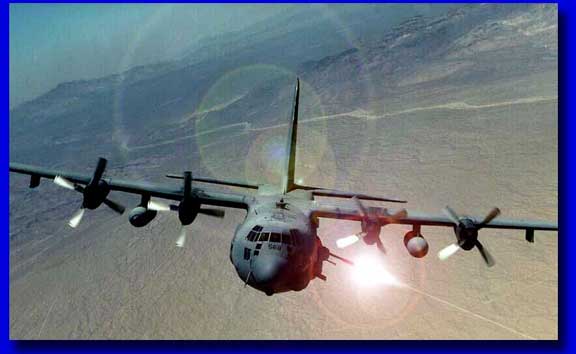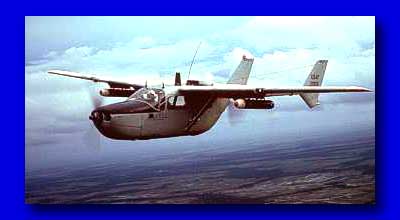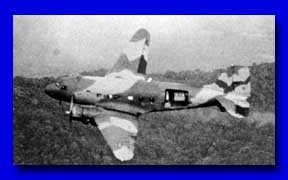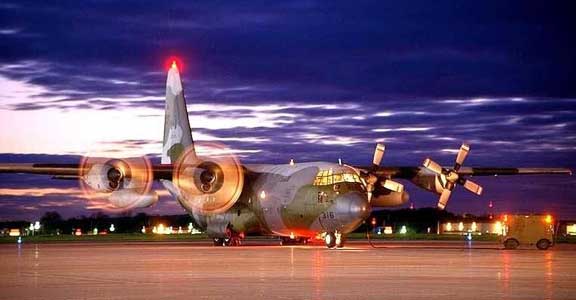 |
|
US Moves Conflict To New Phase |
| FTLComm - Tisdale - Wednesday, October 17, 2001 |
| Yesterday the United States Special Operations AC-130 saw action over Kandahar in
South Eastern Afghanistan. The AC-130 was a modified Lockheed Hercules C-130 fitted
with cannons, mini-gun and howitzer. It first took to the skies over Viet Nam in
1965. It was code named "Spectre" although CNN referred to it as "Spooky"
the name first used on an earlier gun ship the AC-47. The use of aircraft as a gun platform was one of the first uses made of aircraft in W.W.I when movable machine guns were fitted to the observers station and used to strafe targets of opportunity. This was pretty unsuccessful but had a remarkable psychological affect on the enemy. During W.W.II gun platform aircraft were relatively common with the Russians making outstanding use of aircraft as cannon firing tank busters. The British also used pilot fired forward facing guns on several attack aircraft but it was the Americans who tried  mounting
a howitzer in the nose of a B-25 and later other heavy weapons on the B/A-26. mounting
a howitzer in the nose of a B-25 and later other heavy weapons on the B/A-26.But a side firing gun ship was to evolve in Vietnam. Every pilot is trained to do a "slow turn" sometimes called a canyon turn. The procedure is practiced and routine. Reduce the aircraft speed while maintaining level flight and attitude, drop 10º of flaps and make the transition to "slow flight" then increase engine speed to |
 maintain altitude and execute a shallow left hand turn. Aim down the wing to a spot on the grown and rotate the aircraft around that spot. This is a very "Cessna" procedure and in Vietnam the bird-dog single engine Cessna jockeys used that turn routinely. The use of the O2-A twin Cessna (civilian 337 Skymaster) as a bird dog gave pilots power speed and quick handling over "hot" zones. One of the modifications to the 337 was the addition of hard points under the wings. These were used for marker rockets but someone got the bright idea of mounting two fifty calibre machine guns pointing down the line of sight of the left wing and it was discovered that amazing accuracy and devastation could be produced with this simple weapon. In addition a turning aircraft even at low altitude is really hard to hit with light weapons from the ground. |
 With this experience
and the availability of the high rate of fire mini-guns some C-47 (Dakota or DC-3
as most of us know them) were converted to gun ships. The US Air force designated
these ground pounders as "Spooky" but when in action the fire from these
machines at night was awesome and were dubbed by ground forces as "Puff the
Magic Dragon". Using the slow turn and a lot of firepower these weapons were
extremely effective and as you can see in this picture the cargo door has been removed
from this Vietnam Puff and a Howitzer installed in the doorway. With this experience
and the availability of the high rate of fire mini-guns some C-47 (Dakota or DC-3
as most of us know them) were converted to gun ships. The US Air force designated
these ground pounders as "Spooky" but when in action the fire from these
machines at night was awesome and were dubbed by ground forces as "Puff the
Magic Dragon". Using the slow turn and a lot of firepower these weapons were
extremely effective and as you can see in this picture the cargo door has been removed
from this Vietnam Puff and a Howitzer installed in the doorway.The C-130 Hercules was a top line transport at the time and to valuable to be converted to barrage duty but when it was discovered the powerful effect these things had on the enemy, AC-130 Spectre units were established in number. Since then, the Spectre has been involved in every conflict the United States has been involved in including Granada, Panama, Somalia and Kosovo. One third of all casualties in Desert Storm occurred with the loss of a Spectre and its thirteen man crew. The modern version of the AC-130 is truly a serious aerial battleship. Able to stand off five miles from target using television and infrared imaging its ability to accurately deliver ordinance is depressingly overwhelming. With two Vulcan Cannons, mini-guns and its howitzer it can ripe a target area to pieces as it orbits with its train of fire focused on that central target area from all 360ºs. The United States is apparently confident that they have sufficiently suppressed Taliban air defenses to commit these airborne weapons systems to targets deep inside the country. The Hercules is one of the most impressive aircraft ever made and air forces throughout the world rely upon it for combat and emergency aid transportation. The United States has three other variants of this aircraft in service. The Talon for deep penetration into hostile territory, the Shadow for refueling rescue helicopters or covert units and a variant design to snatch, using balloon lines cargo or people from an area without landing. In 1985 the US even developed a rocket assisted version to land and take off from a soccer stadium in Iran, (the hostages were released before this project was used.) Below is a Canadian C-130 similar to the three that will be working over Afghanistan delivering humanitarian aid. |
 |